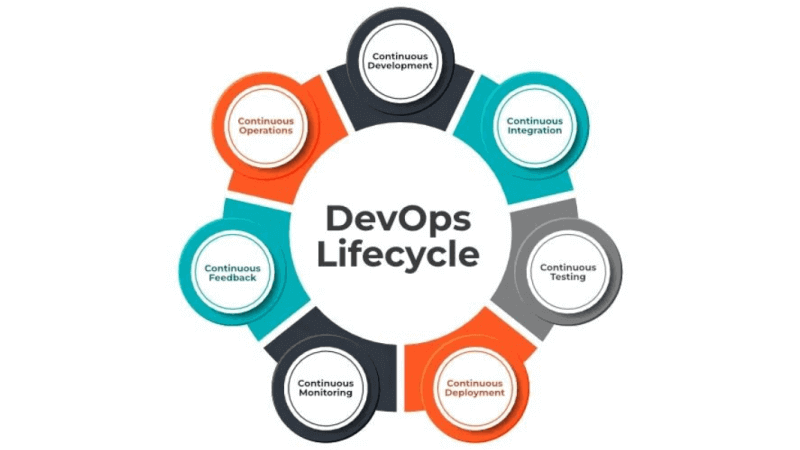DevOps is a software development methodology that integrates and automates the work of software and operations teams, while continuous deployment involves automating the release of software features. Together, they create a culture of collaboration, communication, and feedback. What if you could enhance DevOps with feature flags? Let's dive in and learn how they work, where they fit in the DevOps lifecycle, the benefits they offer, their role in DevOps and Continuous Deployment, and best practices for integrating them into a DevOps environment.

Feature flags and DevOps
A feature flag is a tool that allows developers to launch features and change software configuration without code deployment. It can be coupled with targeting rules to perform a gradual feature deployment, in which a feature is initially released to a small user segment and continually rolled out to more users based on feedback. Let's see why feature flags fit into the continuous testing and continuous feedback phases of the DevOps lifecycle.

The benefits that feature flags bring to DevOps
DevOps involves a set of practices and tools. You can think of feature flags as an essential tool in DevOps that provides numerous benefits from progressive deployment to risk mitigation and others. Let's learn about these benefits.
Progressive deployment
Progressive deployment involves releasing a feature to a small user segment at first. It helps identify and solve all issues before releasing a feature to all users and speeds up software development. Using ConfigCat, you can add targeting rules to your feature flags to target user segments based on region, email, subscription, or any other custom user attribute, making it easier to perform progressive releases.
Risk mitigation
Feature flags can help developers mitigate risks such as bugs or performance bottlenecks associated with a feature in two ways: They enable developers to perform a targeted feature rollout to a small segment of users for testing and gathering feedback. Secondly, if a feature is problematic, it can be swiftly rolled back by turning off its flag while developers work on improving or correcting it before the next rollout.
For example, a new feature in a fintech app might have performance bottlenecks that cause users to lose their funds while transferring funds. With feature flags, this issue can be detected during testing and corrected before rolling out the feature to all users. Feature flags ensure the fast-paced process of DevOps is maintained and risk-free.
A/B testing
A/B testing is when two or more versions of a feature are deployed and released to different segments of users to see which performs better. For example, you can use targeting rules with a feature flag to create two user groups. Each group can receive a different version of the feature, and metrics can be collected from each group, such as user engagements and conversion rates, to make a data-driven decision. This helps you deliver the best user experience and supports continuous testing.
Feature release control
Feature flags allow developers to control feature releases. They can release features to the user segment they want whenever they want. For instance, they can roll out a new feature to users in certain countries or paid users. With feature release control, software developers can flexibly release features in line with DevOps principles.
Rollback capabilities
Before feature flags, when there is an issue with a software feature, software developers would fix the issue and redeploy the application. With feature flags, developers can easily roll back a problematic feature by turning off its flag and fixing the problems. Rollback capabilities ensure the continuous development and iteration of software products based on feedback.
Roles of feature flags in DevOps and continuous deployment
In the previous section, you read about the benefits of feature flags in DevOps. Apart from these benefits, feature flags play various roles in DevOps and continuous deployment. Some of these roles are:
Integration with CI/CD pipelines
Software development teams can integrate feature flags into their CI/CD pipeline to help move features quickly and safely through the pipeline. Feature flags enable the separation of feature rollout from code deployment, allowing incomplete features to be merged into the production codebase while developers continue to work on them. Once complete, software developers can toggle them on using their flags.
Supporting canary releases
Canary release is a deployment strategy that involves releasing a feature to a selected group of users for evaluation and testing. If the feature performs well, it is released to the rest of the user base or rolled back if it does not. For example, an e-commerce website might release its new checkout feature to its active users for testing. If it works well, it can be released to all users or rolled back if it introduces issues.
Best practices for integrating feature flags in a DevOps environment
While there are multiple ways of integrating feature flags in a DevOps environment, it can be beneficial to consider the following best practices for successfully incorporating feature flags into your DevOps workflow.
Use a standardized naming convention for your flags
Have a standard naming convention for feature flags in your team. Using a standardized naming convention ensures that the flags don’t get mixed up by your team members, which may lead to disruptions in your DevOps workflow if the wrong flag is disabled.
Use a feature flag service
Feature flag services allow software developers and teams to configure and manage feature flags in their code from a central dashboard. One such service is ConfigCat. In addition to feature flags, they let developers target specific user segments and provide easy software integrations for many programming languages and technologies to supercharge your DevOps workflow.
Clean up stale flags
One way to keep your code base clean and clutter-free is by cleaning up stale feature flags that are not in use. A tool you can use for this purpose is ConfigCat's CLI tool. It can scan your source code and help you identify stale and unused feature flags to keep your technical debts low.
Conclusion
Feature flags are essential tools in DevOps and Continuous Deployment, and all developers and development teams can find value in using them. They provide benefits like rollback capabilities, progressive deployment, risk mitigation, and feature release control.
To integrate feature flags into a DevOps environment, you should follow best practices like using a standardized naming convention, using a feature flag service and cleaning up stale flags.
If you want to try out a developer-centric feature flag service, ConfigCat has a free-forever plan with enough features for low-volume use cases. You can sign up for the free plan and start using it.
Stay connected to ConfigCat on X, Facebook, LinkedIn, and GitHub for more posts like this and other announcements.
